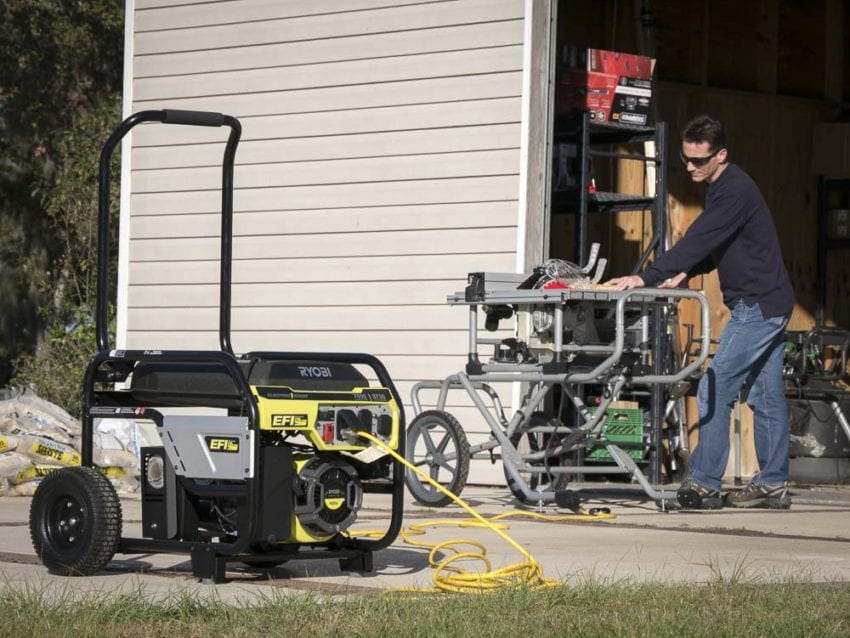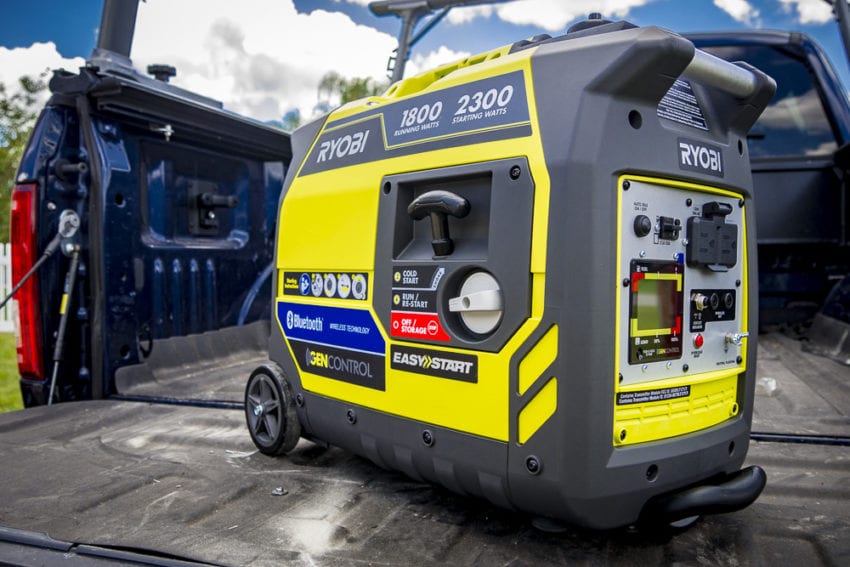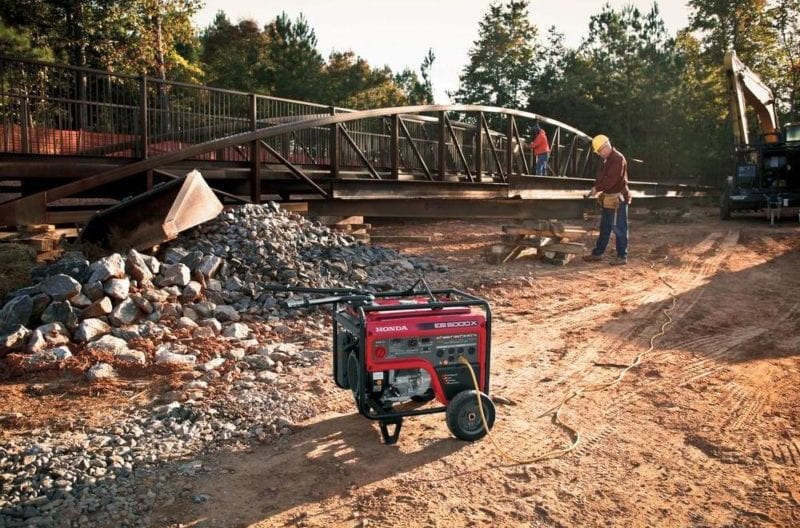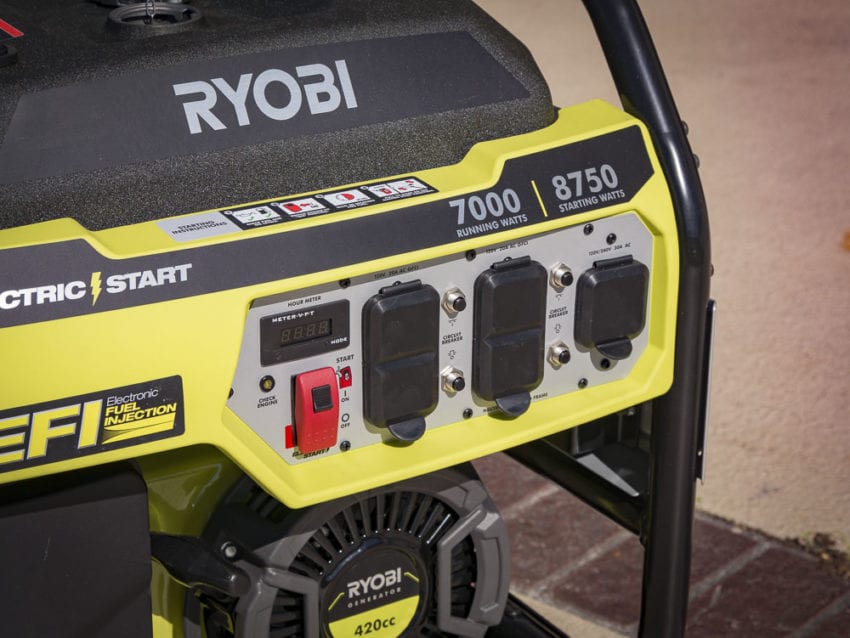What size generator do I need? The very fact that you’re asking the question means you’re off to a good start! Generators vary in size from 1800-watt units all the way to whole-house generators capable of producing 20,000 watts or more. Since the prices vary widely, it can be a challenge to get what you need without spending more than you should. The best generator could be any size, after all. It all depends on your needs.
For the sake of argument, let’s keep the focus on buying a portable generator. After all, we’re a power tool website dedicated to construction. However, what’s good for the jobsite also tends to work well for emergency power. With that in mind, let’s take a closer look at the question of what size generator to buy.
What Size Generator Do I Need?
In general, we find that generators fall into several key classes. That can immediately help you narrow things down. Manufacturers make multiple sizes of generators. They vary in power output or wattage levels. The following “breakpoints” are a great place to start when sizing your generator.
Quick Tip: Generators have both starting watts and running watts ratings. Some brands promote starting watts. Others emphasize the running watts. Running watts tells you what the generator can consistently deliver. Starting watts only affect the power available when you first crank them up.
Under 2000-Watt Generators
Beneath the 2000-watt generator size and class, you find the best prices and the smallest units. Most of these smaller models run on gas. A few battery-powered generators can recharge using solar panels, however. These seem to work best for tailgating and camping. For emergency power, the lower output wattage limits you to lights, fans, and possibly a small refrigerator or other appliance. These smaller generators probably won’t net you the power needed to run your 15-amp tools on the jobsite.
2000-Watt Generators
Once you hit 2,000 watts or so, a generator begins to tackle power tools and serve as a short-term solution to jobsites lacking power. Don’t get us wrong—we love compact 2000-Watt Generators for camping as well. However, moving into higher power levels lets you tackle more jobsite applications. Small angle grinders, sanders, jigsaws, and more. We’ve seen folks run small miter saws and table saws off lower output generators, but we don’t typically recommend it. Stick with larger units for serious jobsite use.
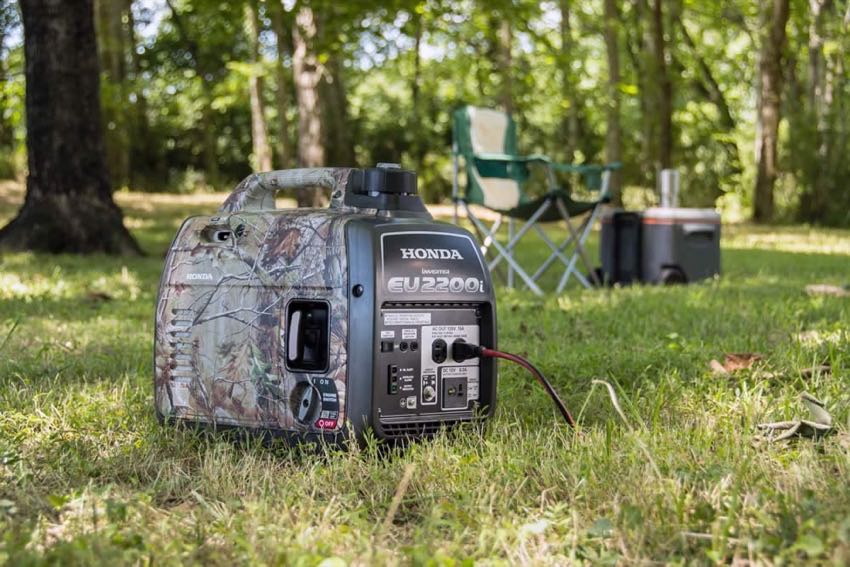
For us, the 2000-Watt generator comes down to flexibility and value. These small units are very portable and they can do double duty for camping and select jobsite use. That makes them one of the most versatile generator sizes you can buy.
5000-Watt Generators
Moving into 5000-watt size generators gets you the power level you’re most likely to find on a jobsite. It’s good for running multiple power tools. That includes those heavy-duty 15-amp table saws and miter saws. On the emergency power side, you can keep the refrigerator running along with lights, fans, or even a window AC unit. If you have your own water pump, this is the smallest you’ll want to consider. Just make sure you get one with a 240V plug.
7500-Watt Generators
At the 7500-watt generator size and class, you begin to lose some portability. You’ll still be able to roll it around, but you’re looking at more than 200 pounds in many cases. Those extra 2000 watts give you the ability to pretty much run an entire jobsite that’s without power. You can run lights and fans along with multiple power tools at the same time. You’ll typically find a 240V plug on these as standard equipment.
These generators also begin dipping into the type of product that can—in a pinch—give you emergency power at the house. We love having these generators around after a hurricane.
10,000-Watt Generators
The 10,000-watt generator size and class pretty much top off the portable generator sector. Beyond that, you run into fixed products. If you have the muscle to move it around, you can power a larger residential job site or even a small home. There’s a temptation to wire this size unit directly into your breaker. Just be sure a qualified electrician is doing the work. The consequences of wiring it incorrectly can be disastrous.
What Generator Size Do I Need? Let’s Talk Real Numbers
To concretely answer the question “What generator size do I need?”, you need to look at your specific situation. And as you know, everyone’s is at least a little different. For the construction Pro, let’s take a look at what tools and products you typically operate. The process is easy. Just take the watts you need to run everything at once and include the starting watts of the biggest power-drawing tool. Let’s say you have a miter saw, table saw, and circular saw along with a battery charger for your cordless tools.
Calculating the Potential Load
- Miter Saw: 1800 running watts, 3400 startup watts
- Table Saw: 1800 running watts. 3500 startup watts
- Circular Saw: 1800 running watts, 3200 startup watts
- Power Tool Battery Charger: 330 watts
Running all your tools at once requires 5,730 watts. And, your table saw has the greatest startup needs at 3500 watts. Accounting for that, you need to increase your need by 1700 watts to 7430. That means you need a generator with at least 7500 running watts. If you and your crew are conscientious about only using one tool at a time, you can drop that down to a 4000-watt unit.
Wrapping Up the Generator Size Discussion
As you can see, the need for more power rises quickly. It’s always important to start with the question: “What do I really need to run?” Using less generator power is one of the things that makes cordless tools so attractive. Consider this—we have legitimate options for cordless miter saws and circular saws. Your generator needs could drop somewhere around 4000 watts simply by upgrading some tools to cordless.
You can use the same formula to decide what size generator you need to buy for emergency power situations. Just keep in mind the difference between need and want!

